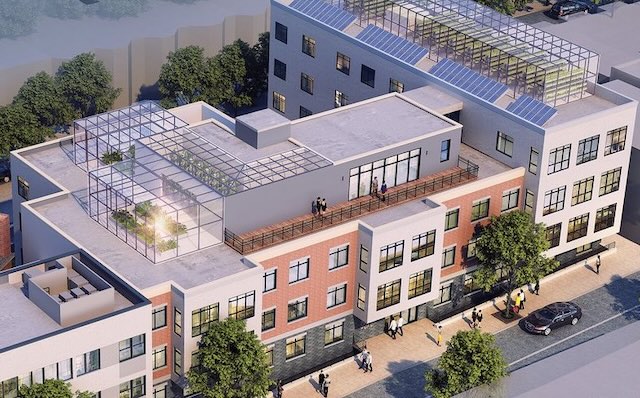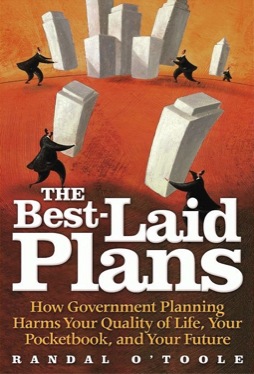The Washington Post has discovered that there are “inefficiencies” in the nation’s affordable housing programs, including its largest one, low-income housing tax credits. Due to these inefficiencies, one non-profit developer in DC is spending up to $1.3 million per housing unit. Another developer spent $800,000 per unit, while right next door the very same developer built market-rate housing for just $350,000 per unit.
Ontario Place, a so-called affordable housing project that is costing $1.2 million per unit.
Ontario Place, the project pictured above, “will include a rooftop aquaponics farm to produce fresh fruits and vegetables for its tenants,” which contributed to the $1.2 million per unit cost. Another expensive project found by Post writers, which cost “only” $815,000 per unit, “includes a fitness room to encourage physical activity, a library, a large café with an outdoor terrace, a large multi-purpose community room with a separate outdoor terrace, an indoor bike room, on-site laundry, lounges and balconies on every floor.”
As economist Alex Tabarrok recently observed, affordable housing is unaffordable because the agencies distributing the funds are often more concerned about such things as environmental sustainability, racial equity goals, community development, and other factors that have little or nothing to do with affordable housing. Due to these misplaced priorities, I calculated more than a year ago, between 2004 and 2019, the amount of money spent subsidizing affordable housing more than doubled but the number of units built declined so that the subsidies per unit increased by at least 130 percent.
Most affordable housing projects are supported by multiple federal, state, and local housing funds. A report from California found that each additional funder adds more than $20,000 per unit to total development costs.
The Post discovered that New Jersey has set a cap of under $400,000 per affordable housing unit. “When you look at a deal structure, almost everyone else in the deal makes more money when costs go up,” the director of New Jersey’s housing agency told the Post. The developers themselves typically get 15 percent as a “developer fee.” So neither the developers nor any of the contractors have an incentive to oppose policies that make either affordable or market-rate housing more expensive.
Most developers sell low-income housing tax credits to banks for 25 percent discounts. The developers themselves have been found to get 45 percent of the benefits from affordable housing projects. After deducting costs added to the projects in the name of sustainability and other goals, low-income people probably get less than 20 percent of the benefits of the projects.
Congress created low-income housing tax credits in 1987 in the hope that private developers would be more efficient in building affordable housing than public housing agencies. Instead, the program has proven that private businesses can be just as wasteful and costly as public agencies if they are given the same bad incentives. It’s time to abolish affordable housing programs. If four-fifths of the benefits of affordable housing go to people other than tenants, low-income families would be better off if just one-fourth of the costs of those program were dedicated instead to housing vouchers.









Here’s a better plan affordable housing
YOU BUILD IT.
hire the guys from This New House, Give em offloaded materials. You and your family help…..
On other hand US has 15 million vacant homes…
https://todayshomeowner.com/general/guides/highest-home-vacancy-rates/
Voucher them/rent them from banks….
Banks lose money on them longer they keep em anyway, Why not let loose them to families in need.